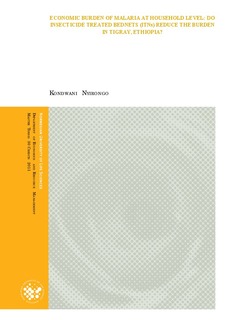Economic burden of malaria at household level : Do insecticide treated bednets (ITNs) reduce the burden in Tigray, Ethiopia?
Abstract
The broader impact of malaria need not to be over emphasized with the disease claiming life of a child every 45 seconds and attributed to slow economic growth in malarious areas of the world. Beyond this broader picture, there has been wavering empirical evidence on the impact of the disease at micro level especially on households’ consumption expenditures and crop land-productivity. This study investigated the economic burden of malaria at household level i.e. the impact of the disease on households’ consumption expenditures (direct cost burden) and crop land-productivity and the role of ITN interventions in Tigray, Ethiopia. Using equality mean test on the two years (2006 and 2010) panel data, the study found negligible annual direct cost burden of malaria (0.69% of consumption expenditure) which is not catastrophic (significantly less than 10% of consumption expenditure) to household consumption expenditure. Estimation of the instrumental variable regression on 2010 cross sectional data, however, unveiled that malaria lowers crop land-productivity by 11.25% through loss of labour due illnesses and care giving. Most importantly, the study also found that ITN interventions play an important role in cushioning the economic burden of malaria in the region and doubling coverage may almost wipe out the burden. The above research findings have important policy implications on crop land-productivity improvement, design and adoption of malaria control interventions in Tigray.
